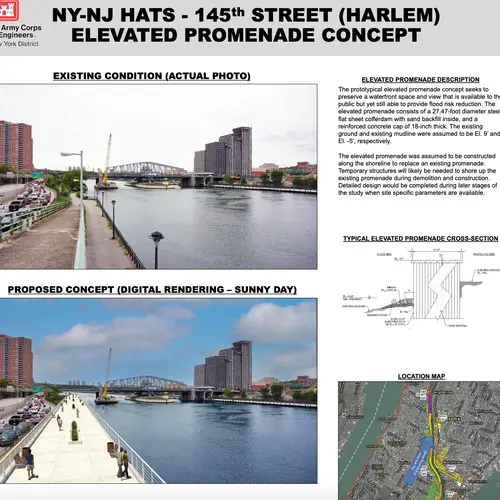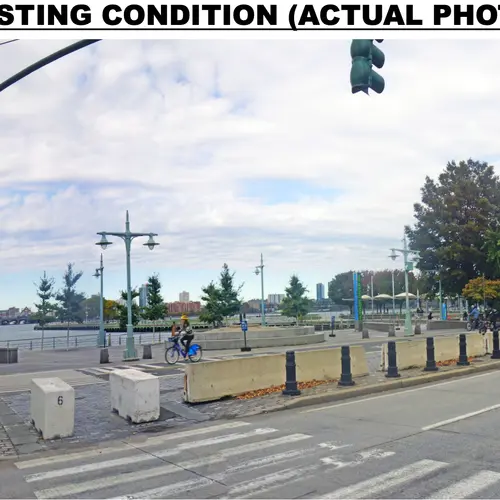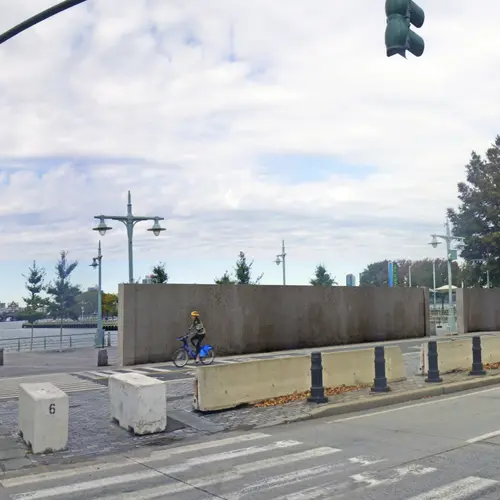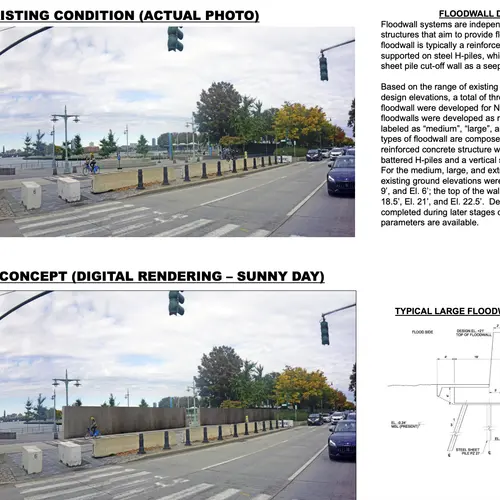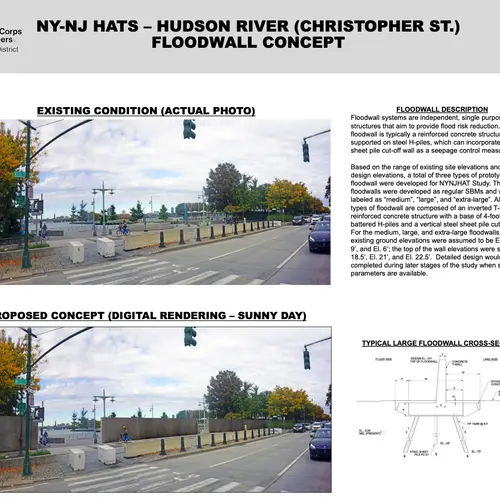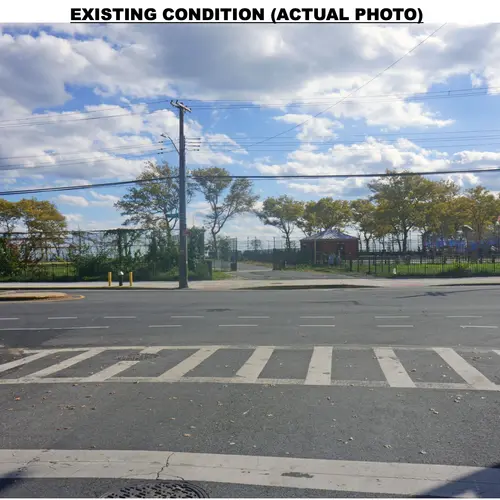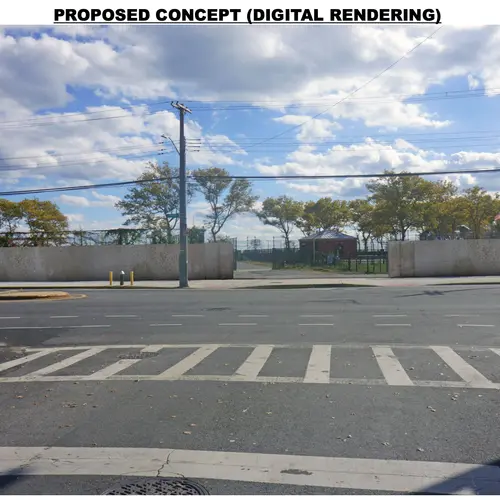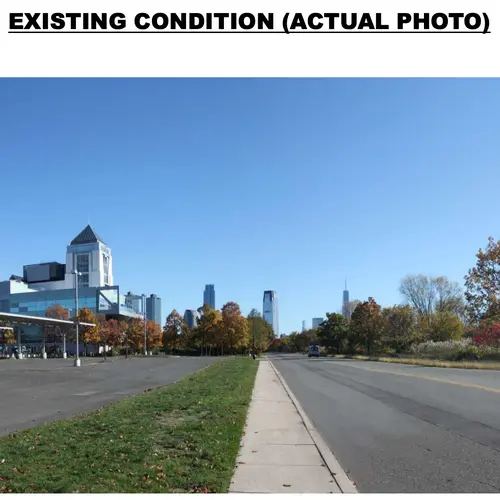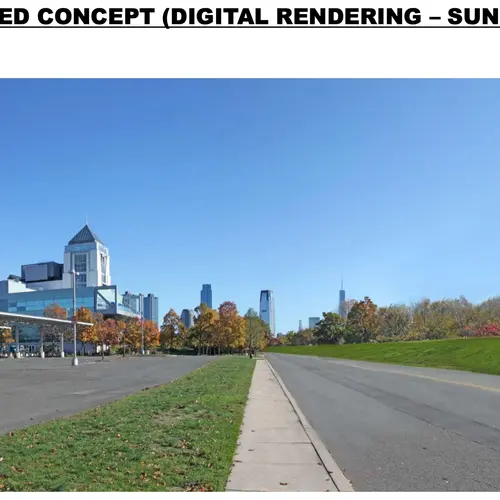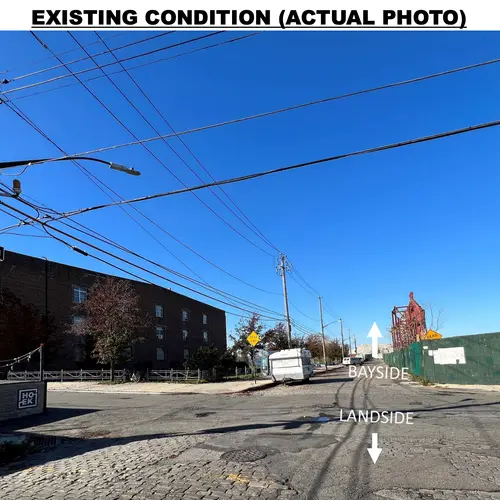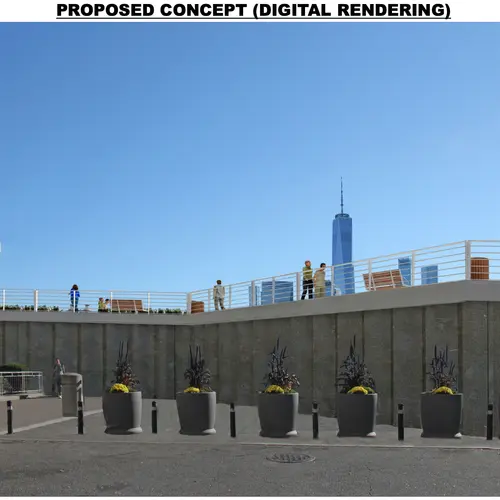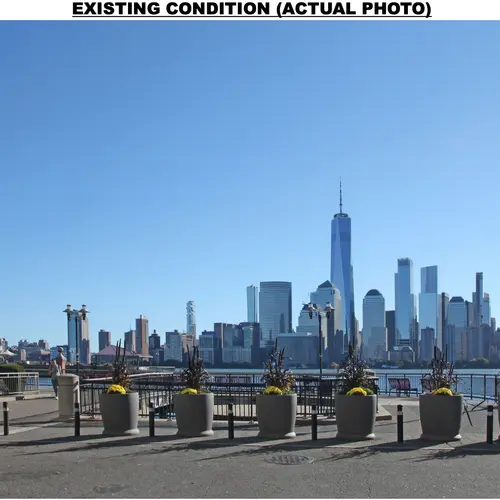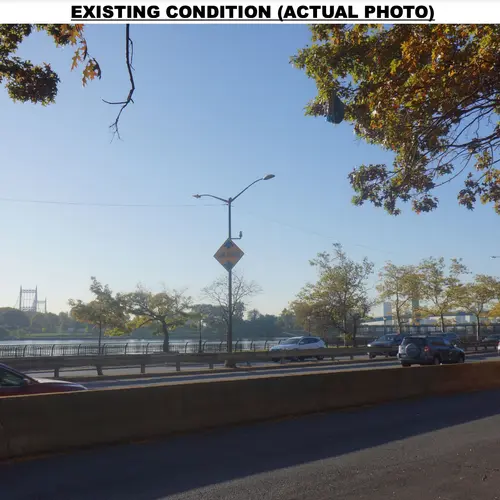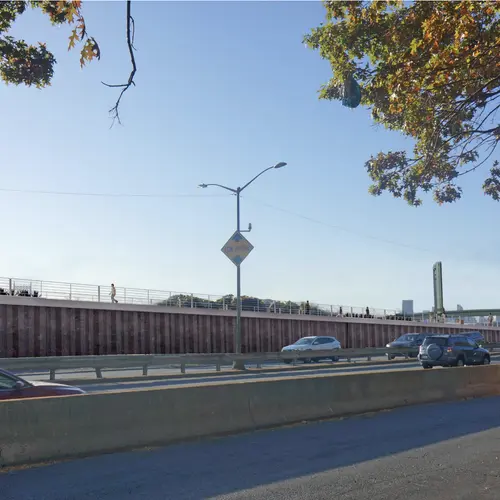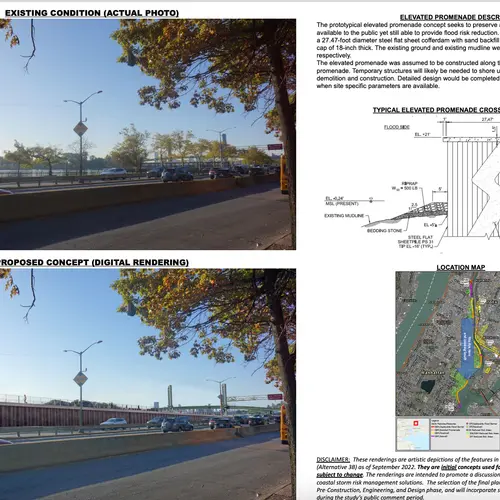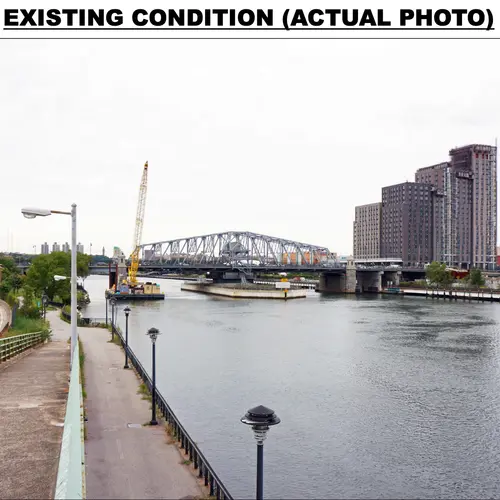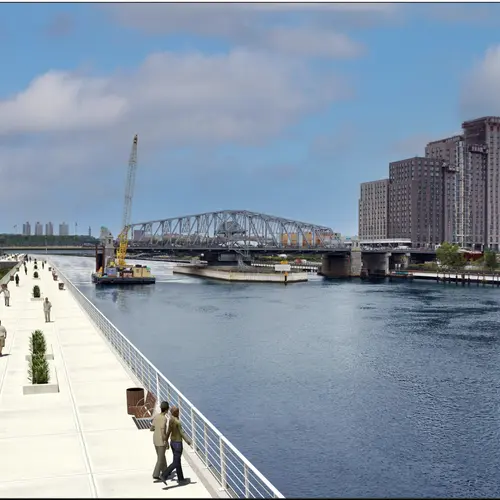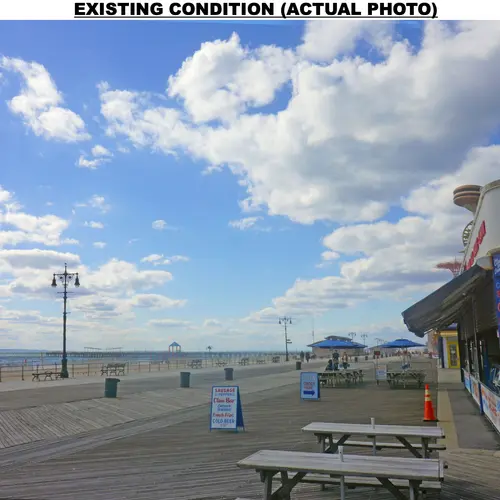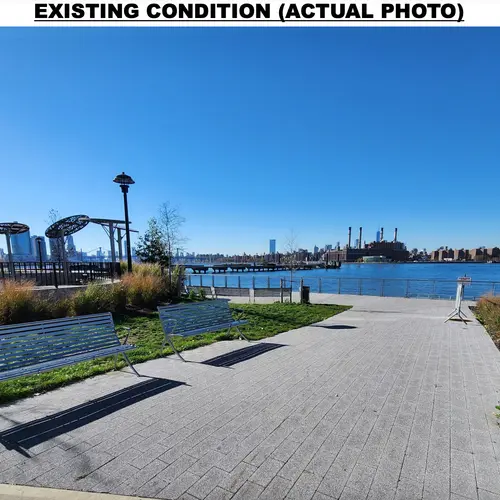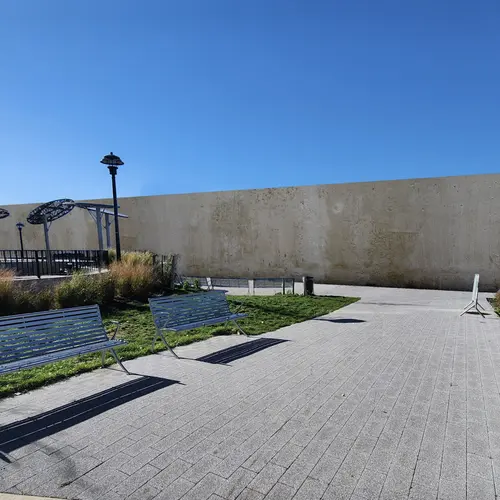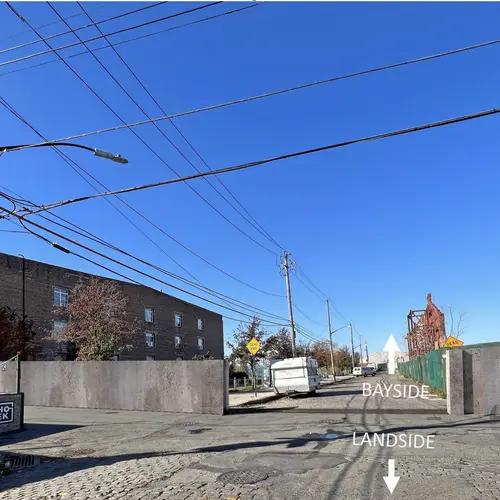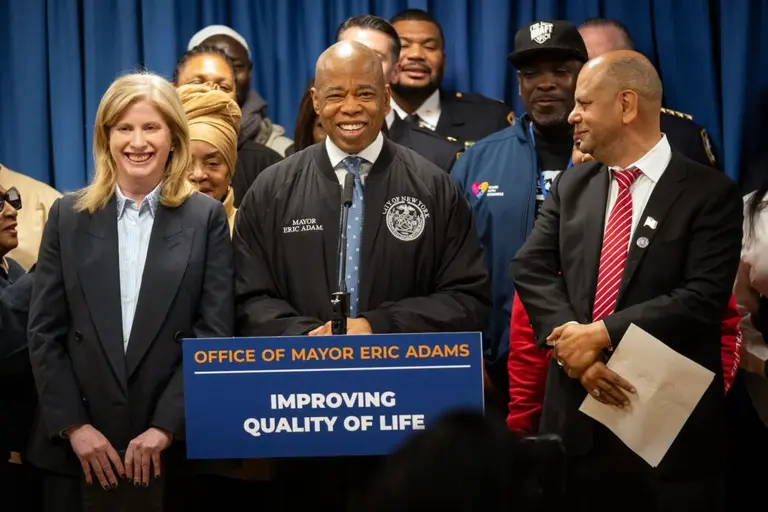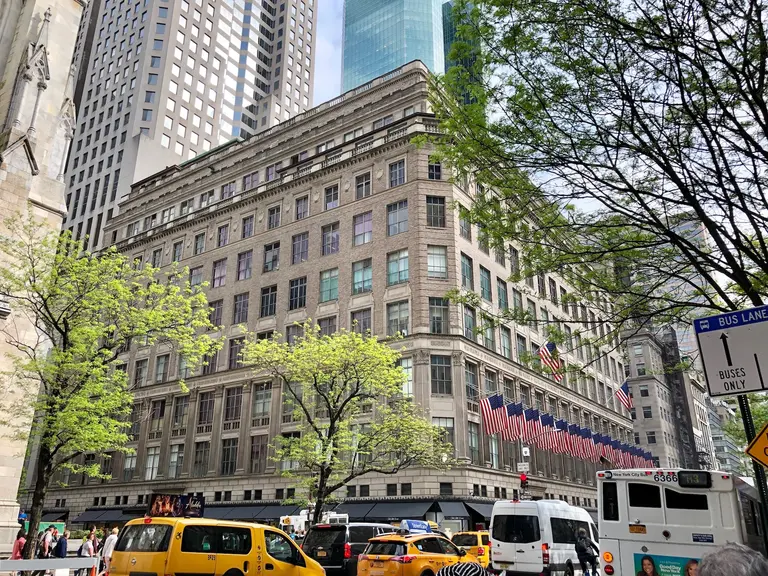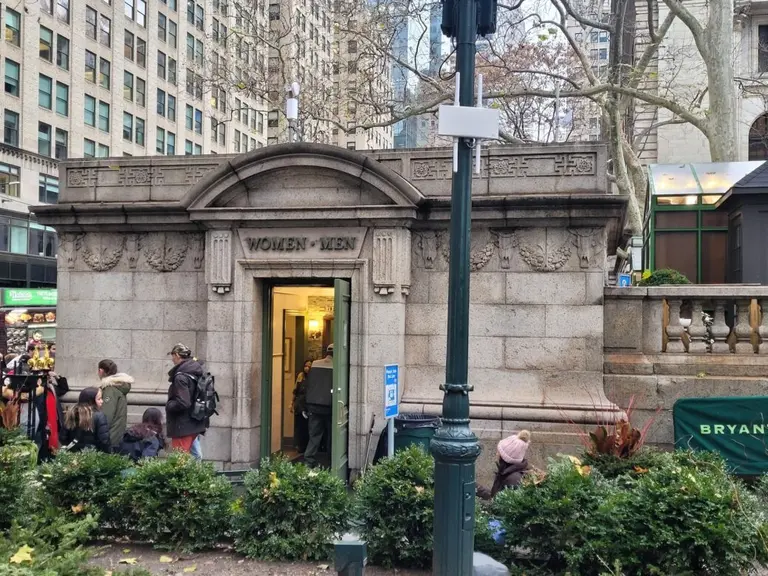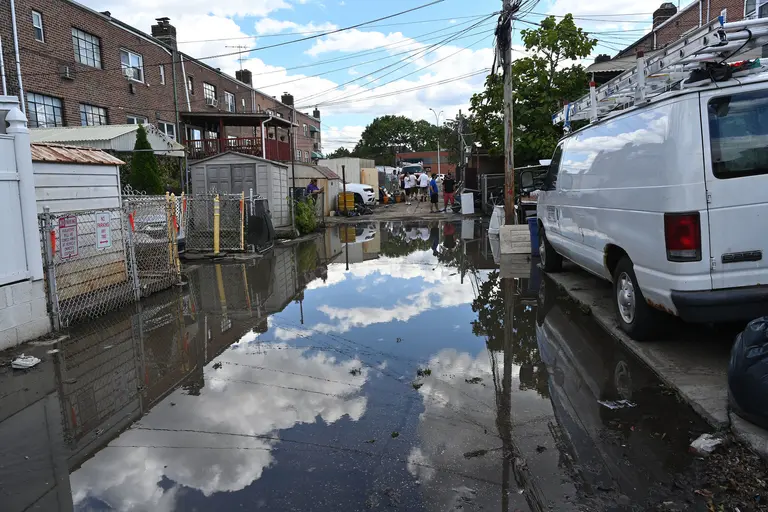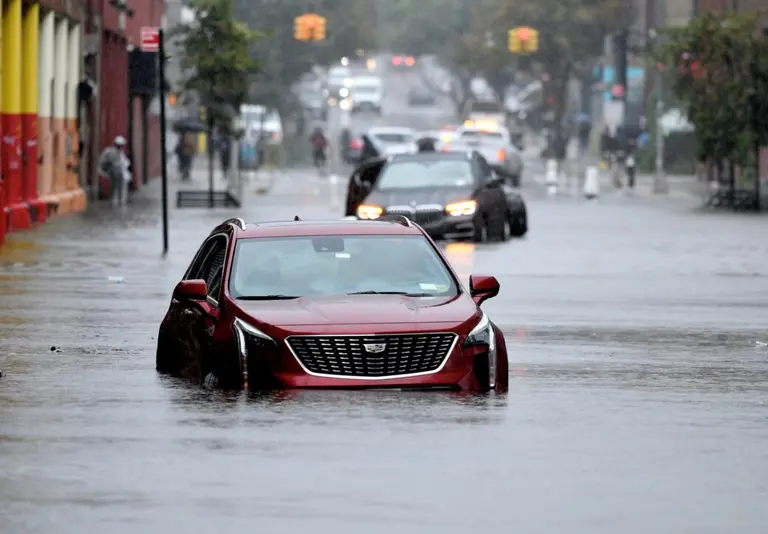Army Corps of Engineers releases first renderings of NYC sea walls for coastal storm protection plan
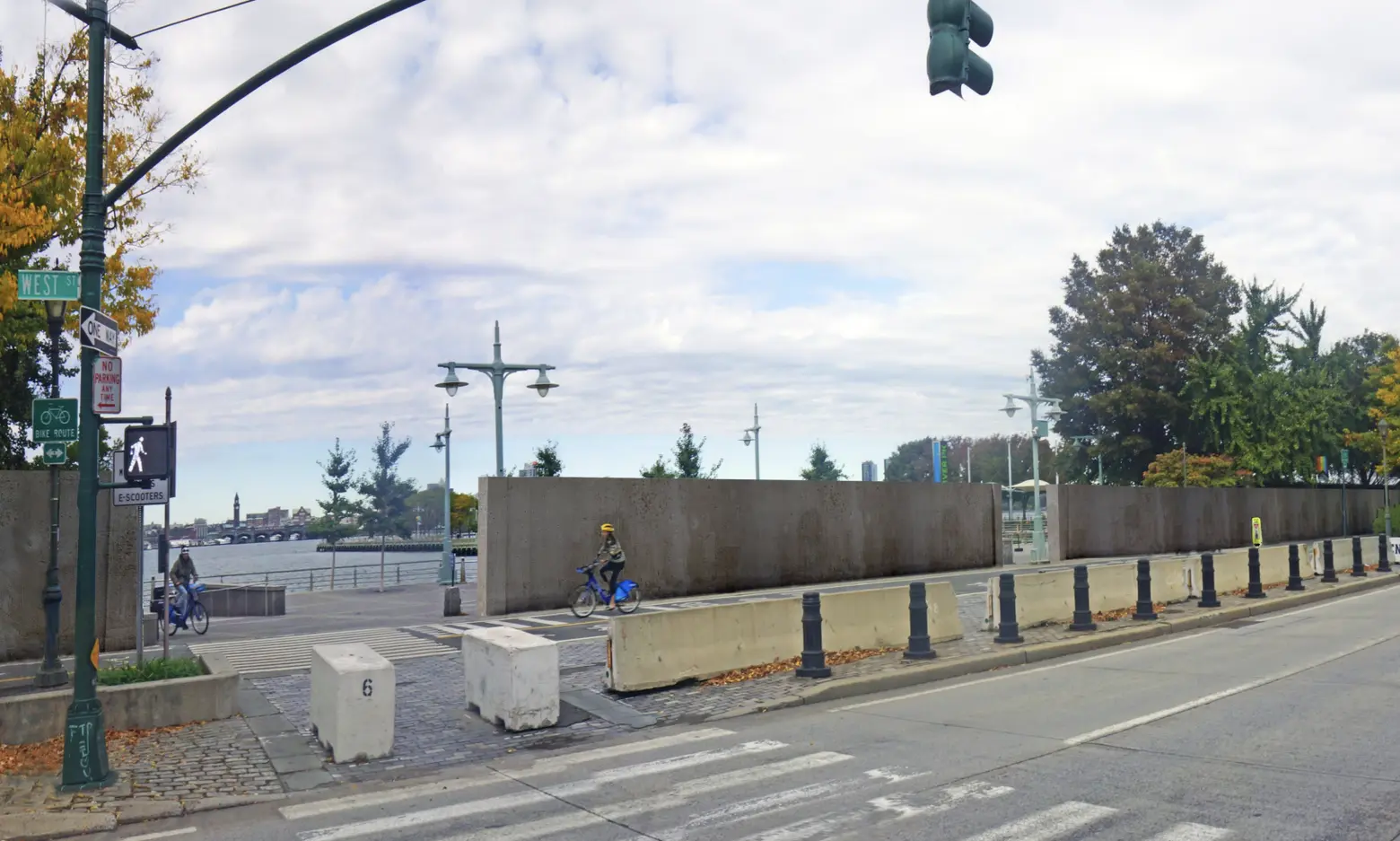
This rendering shows a 20-foot-tall proposed floodwall along the Hudson River at Huron Street in the West Village. Image: Army Corps of Engineers.
Late last year, the U.S. Army Corps of Engineers released the $52 billion proposal that will represent the most comprehensive effort to date to protect the city from storm surges and the only existing plan for protecting the entire New York Harbor area. The Army Corps recently revealed a new series of renderings that provide a visual glance at how some of these projects might transform the New York City waterfront. Renderings show barriers, gates, sea walls, and raised promenades at Flushing Bay in Queens, at Greenpoint Public Park, and Coney Island in Brooklyn, among others, as THE CITY first reported.
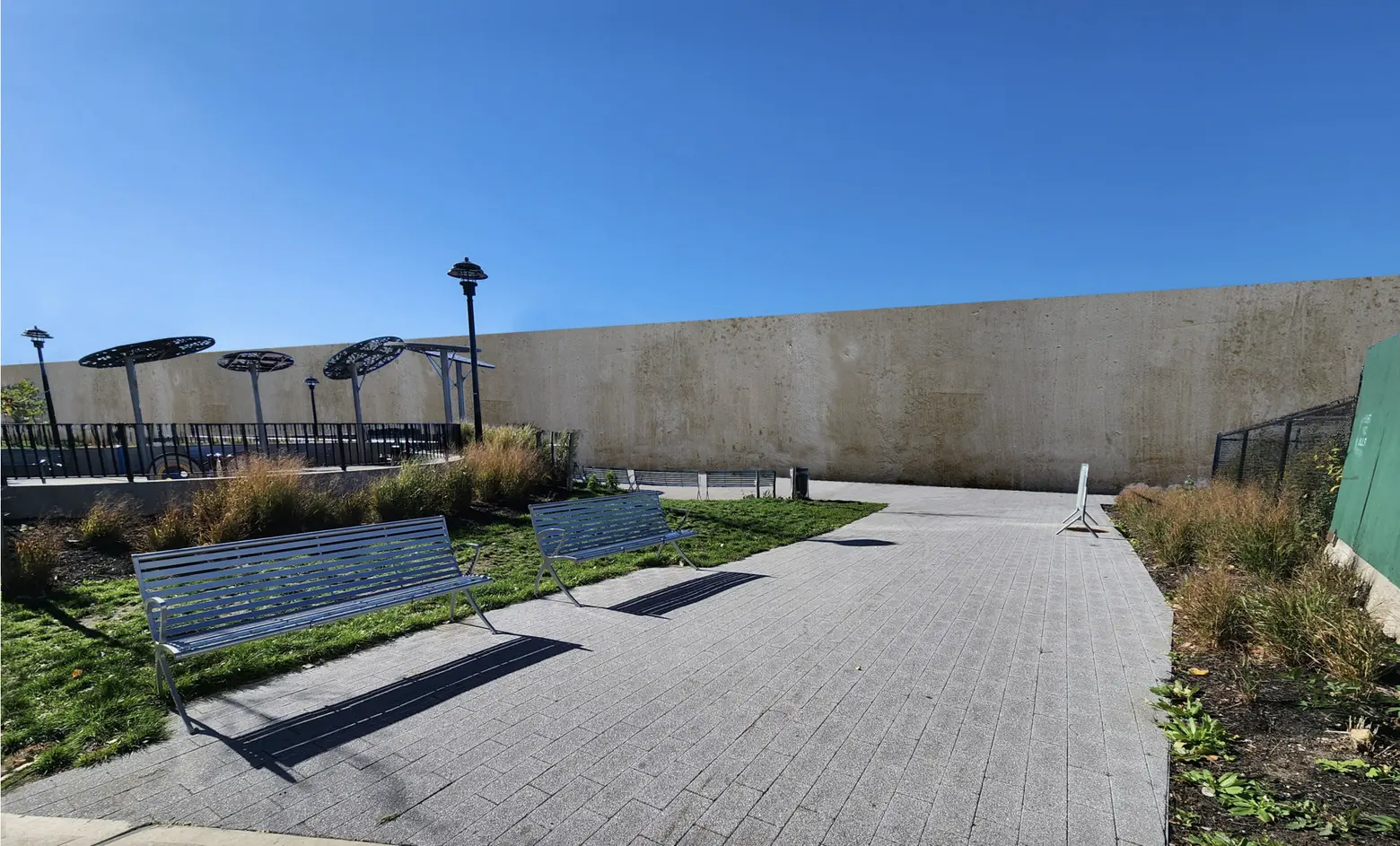
Rendering of a floodwall along the East River in Greenpoint from Kent Street to Newtown Creek. Image: Army Corps of Engineers.
The current proposal includes the construction of 12 sea wall barriers across the mouths of major waterways across the city. In one rendering, a concrete wall stands between land and water at Christopher Street Pier on the Hudson River, part of six miles of barriers, gates, and sea walls that would protect the coastline from Hudson Yards to Battery Park against coastal storms and the kind of disastrous flooding experienced during Hurricane Sandy.
The Army Corps emphasizes the fact that the proposal and renderings are preliminary, with room for changes that might include integrating natural solutions, such as marsh or oyster restoration–and that now is the time to make those changes. Bryce Wisemiller, the Army Corps’ New York district project manager, told THE CITY:
“To the extent that anybody is shocked by any of these renderings, we certainly can understand. But this is a starting point that can only get better from here.”
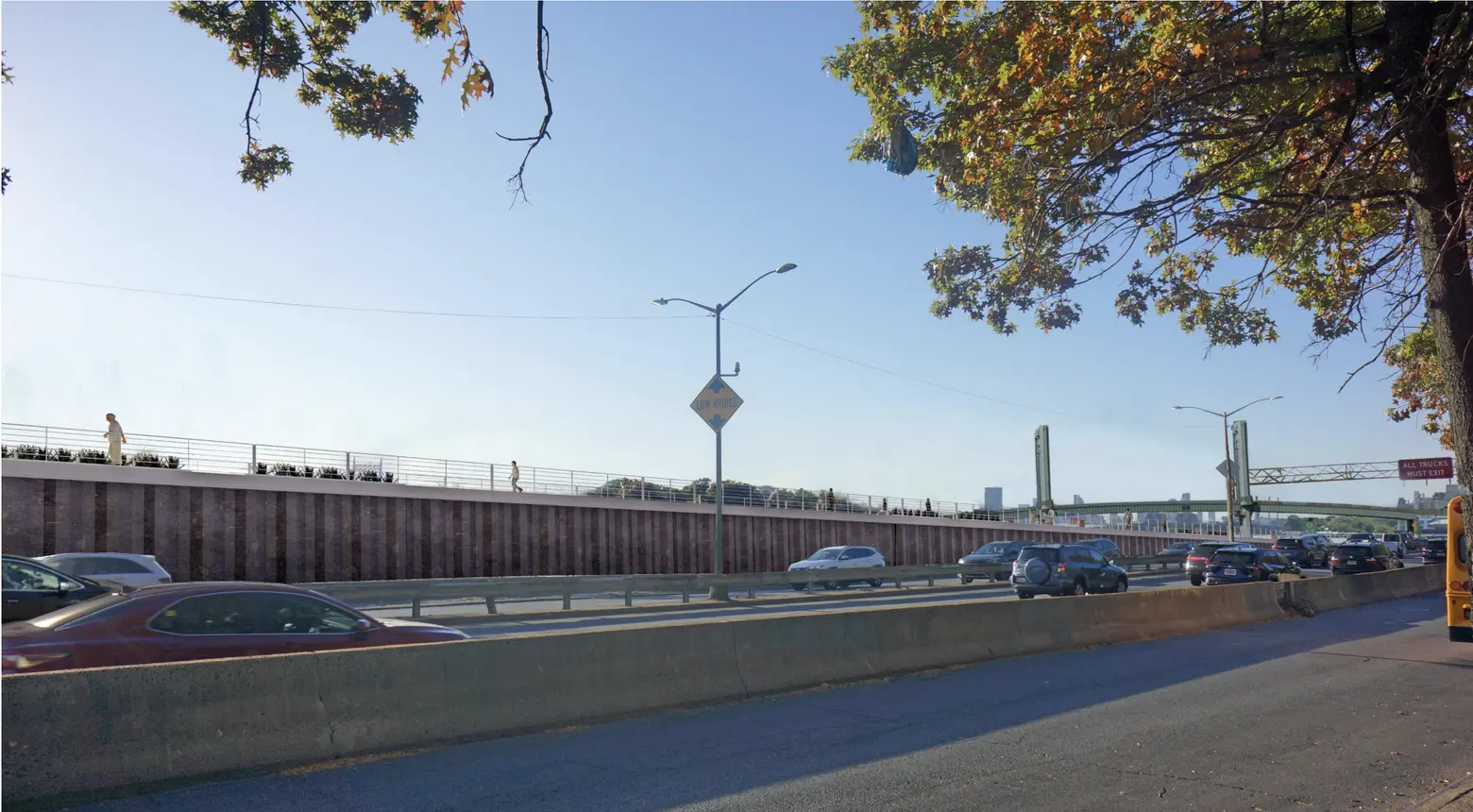
This rendering shows a proposed elevated promenade along the Harlem River around East 106th Street. Image: Army Corps of Engineers.
In East Harlem, almost five miles of floodwalls, sea walls, and flood barriers are shown along the shoreline between Manhattan and the South Bronx. The proposal includes elevated promenades near East 106th Street and East 145th Street.
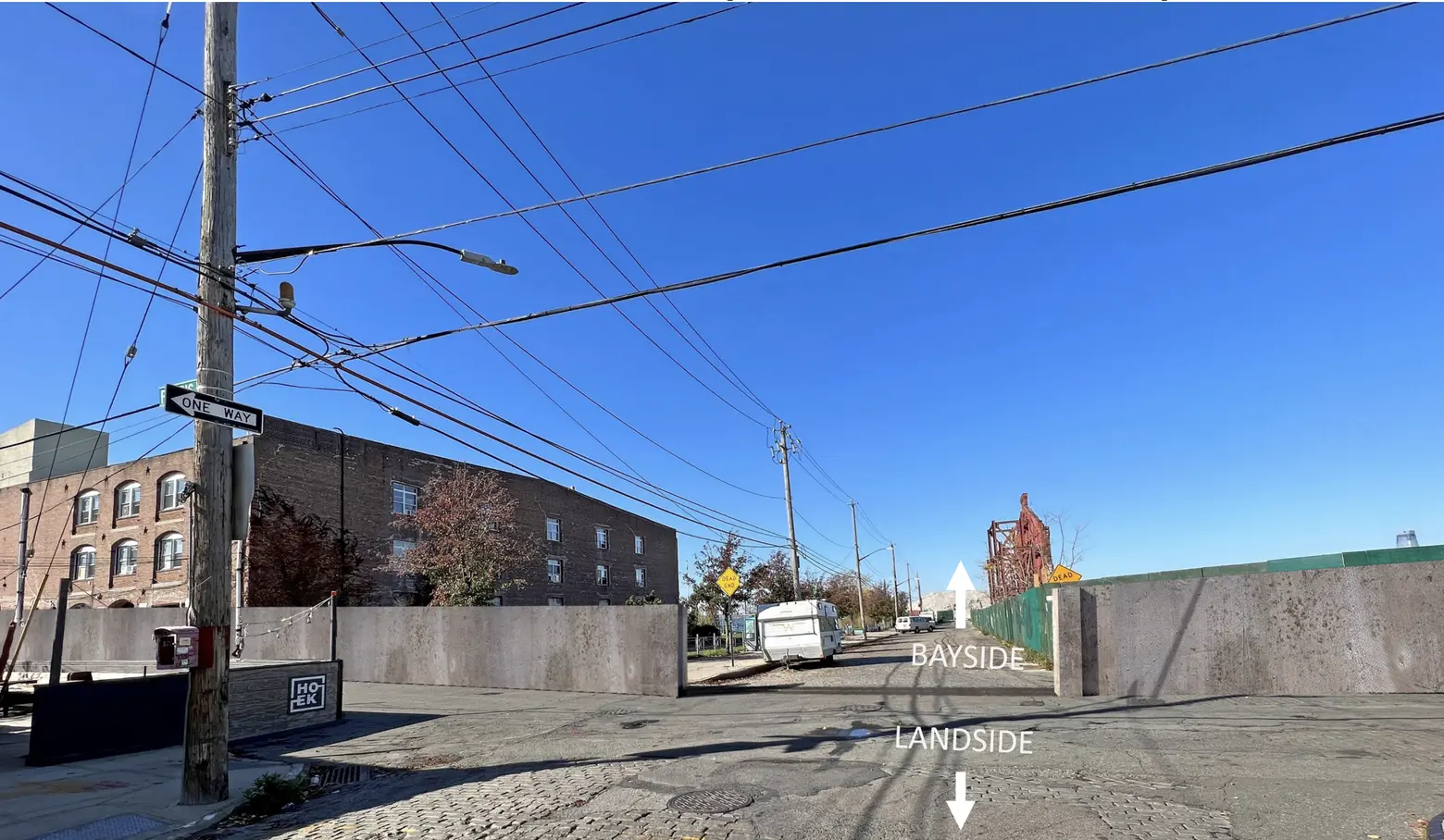 Proposed floodwall at Coffey Street and Ferris Street in Red Hook. Image: Army Corps of Engineers.
Proposed floodwall at Coffey Street and Ferris Street in Red Hook. Image: Army Corps of Engineers.
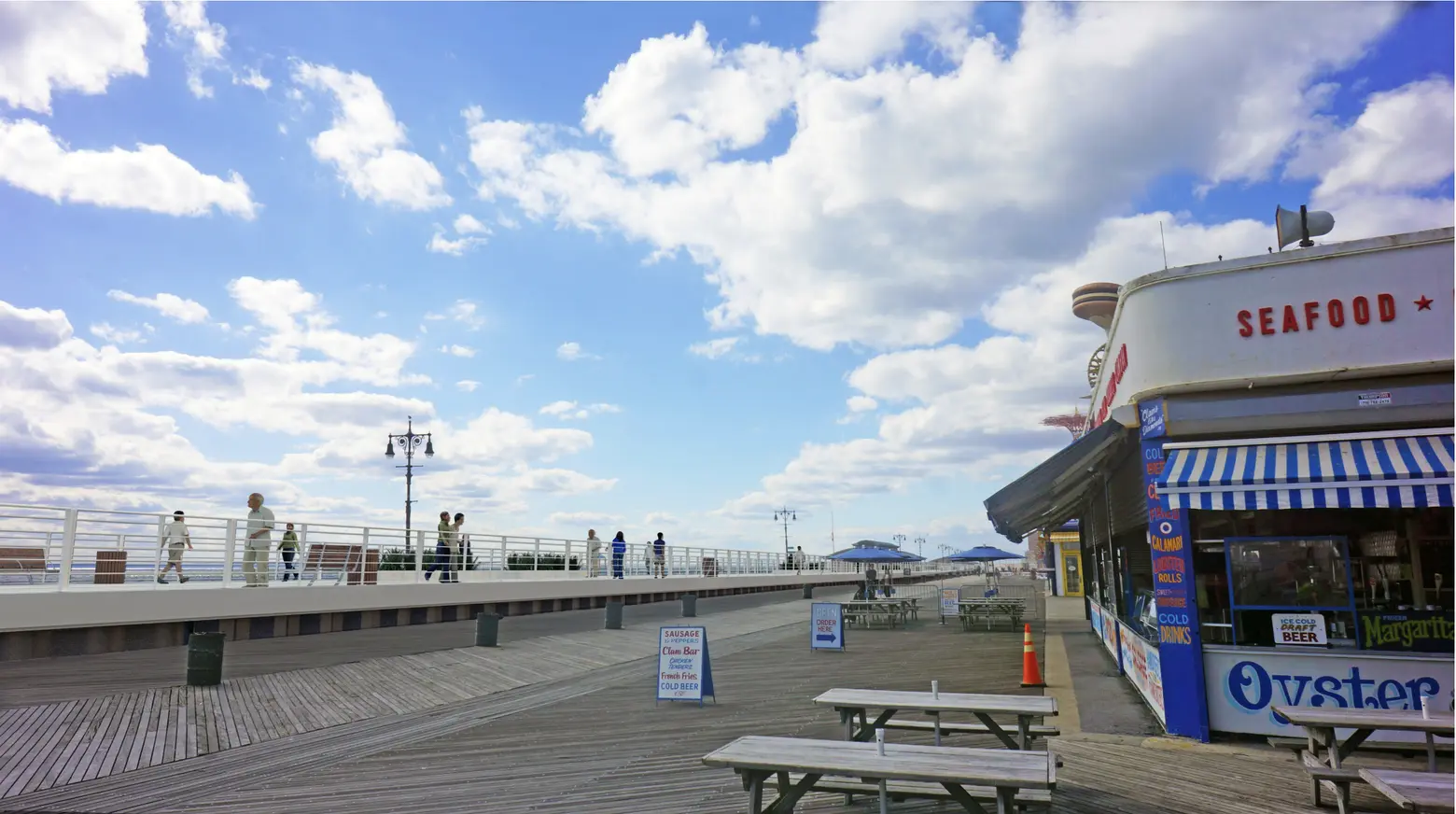 In the proposal, the Coney Island boardwalk would be elevated, meeting a sea wall and floodwall that would wrap the peninsula. Image: Army Corps of Engineers.
In the proposal, the Coney Island boardwalk would be elevated, meeting a sea wall and floodwall that would wrap the peninsula. Image: Army Corps of Engineers.
In Brooklyn, a floodwall would run along the East River from Kent Street to connect with a storm surge gate straddling Newtown Creek. Manhattan Beach and Red Hook would have similar walls. The Coney Island boardwalk would be elevated, meeting a sea wall and floodwall that in turn would curve to meet a tide gate across Coney Island Creek. The Army Corps also proposed 12 offshore storm gates across Newtown Creek, Jamaica Bay, and the Gowanus Canal, among others, that could be closed to protect neighborhoods from flooding during storm surges.
The Army Corps began the project in 2016. An earlier approach to sea wall barrier construction which involved a larger outer harbor wall–and came with a $119 billion estimate–was nixed by the Trump administration. That plan also received criticism for allegedly being ineffective and possibly harmful to the environment.
Kate Boicourt, director of the nonprofit Environmental Defense Fund’s New York-New Jersey climate resilient coasts and watersheds program, called the current proposal “the largest transformation of our waterfront since the Robert Moses era.”
The plans currently being presented will welcome local feedback at public meetings hosted by the Army Corps through March 7th.
Rebuild By Design and the National Parks Conservation Association are hosting a workshop, which will be held next month, on how to effectively compose comments. Officials from New York and New Jersey must approve the plan; it would then require Congress to sign off and allocate funding. Once those hurdles are cleared, construction could begin as early as 2030, with full completion expected in 2044.
RELATED:
- 10 years after Superstorm Sandy: rebuilding, redesigning and rethinking New York City
- De Blasio unveils $10B plan to flood-proof Lower Manhattan by extending shoreline into the East River
- Army Corps proposes constructing hurricane barriers across the NY Harbor to stop flooding
- The Urban Lens: Remembering the darkness of Hurricane Sandy five years later
